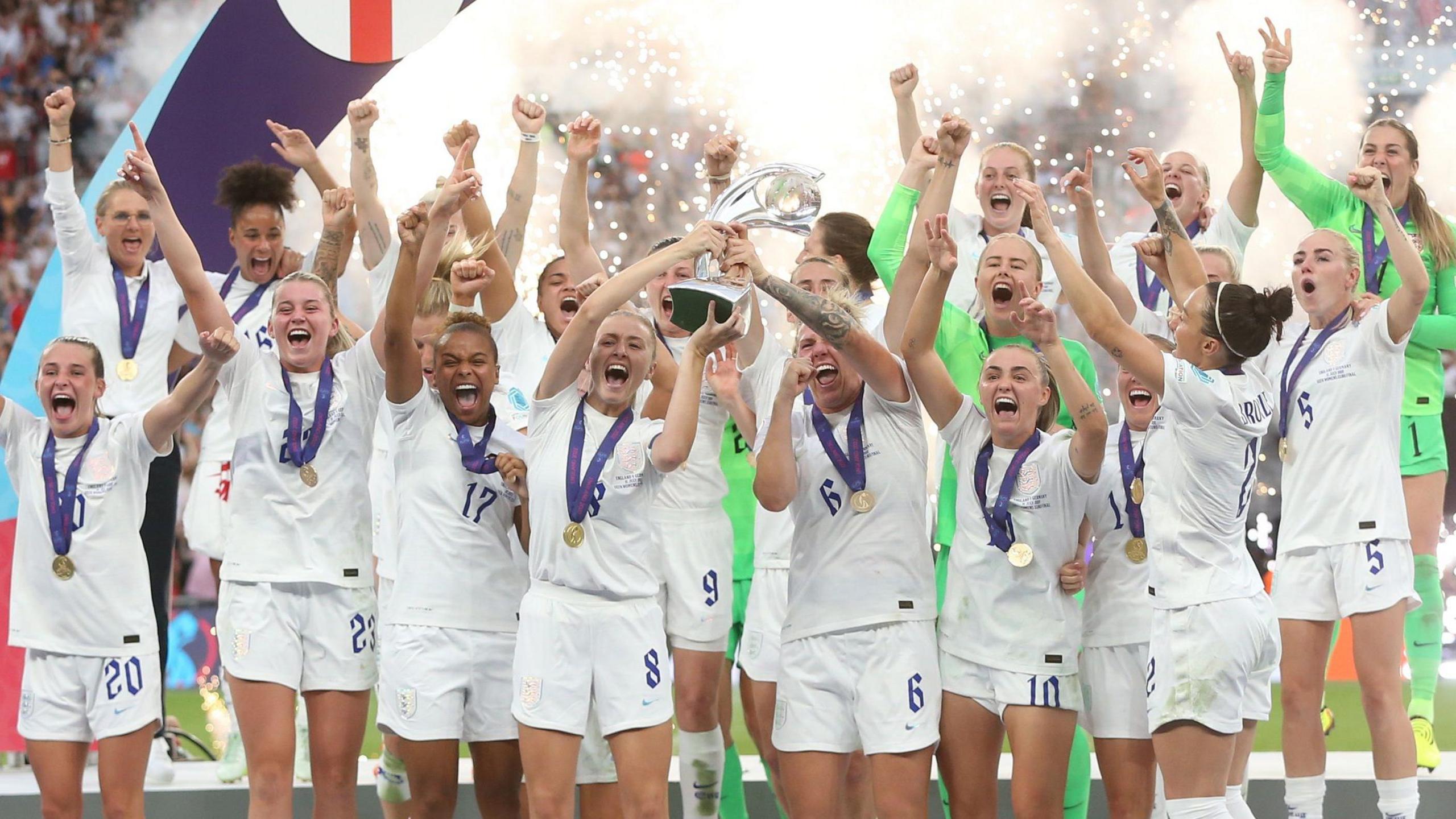WSL revenue up by 50% after England Euros win

England beat Germany to win Euro 2022
- Published
The aggregate revenue of Women's Super League clubs went up by 50% to £48m in the 2022-23 season, according to analysis from Deloitte.
That rise followed England winning Euro 2022, with the total predicted to reach £52m for 2023-24 and £68m in 2024-25.
The average attendance in the WSL went up from 1,923 to 5,616 in 2022-23 and, with clubs increasing their use of their main stadiums, cumulative matchday revenues grew to £7m.
It rose again after England reached the final of the 2023 Women’s World Cup, losing to Spain. Cumulative attendance across the WSL and Women's Championship in 2023-24 surpassed one million for the first time.
"WSL clubs are home to world-class players whose success on the international stage has drawn new fans to the domestic game," said Jenny Haskel, knowledge and insight lead in the Deloitte Sports Business Group.
"The soaring revenue growth achieved demonstrates the strides that have been made. However, we’re still in the foothills of growth in the women’s game."
Commercial revenue for 2022-23 was £17m for WSL clubs - £5.2m for Manchester United, £3.6m for Manchester City, £3m for Liverpool and £1.7m for Tottenham.
The top four revenue-generating WSL clubs were Arsenal, Chelsea, Manchester City and Manchester United, and they accounted for 66% of the total revenue for the division.
Overall, the pre-tax losses of WSL clubs went up to £21m in 2022-23, from £14m the season before.
"Many women’s clubs continue to rely on financial contributions from their wider group structure," said Tim Bridge, lead partner in the Deloitte Sports Business Group.
"However, this is not a new revelation in football where many owners prop up the shortfalls of loss-making clubs.
"It's important the industry does not hold women's clubs to a profitability metric that the wider game has yet to consistently achieve.
"We're seeing significant growth across the women's game and continued investment is key."
An independent club-led body known as NewCo will take over the top two divisions in women's football from next season.